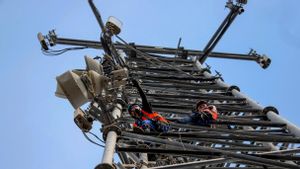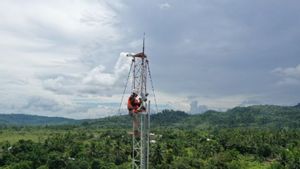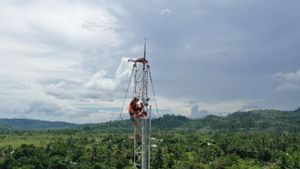JAKARTA - PT XL Axiata Tbk (EXCL) noted that revenue grew 10 percent year on year (yoy) to IDR 23.88 trillion until the third quarter of 2023.
XL President Director & CEO Axiata Dian Siswarini explained that digital data and service revenue contributed IDR 21.72 trillion, or the equivalent of 91 percent of the company's total revenue.
"We will continue to carry out various initiatives, including encouraging and accelerating the growth of the Fixed Broad Band (FBB) and Fixed Mobile Convergence (FMC) businesses, which to date continue to show very encouraging potential," said Dian quoting Antara.
Revenue before deducting interest, taxes, depreciation, and amortization or EBITDA grew 13 percent (yoy) to Rp11.76 trillion until the third quarter of 2023, with an EBITDA margin of 49 percent.
Until the third quarter of 2023, Dian revealed that there were 206,000 Home service subscribers, with the addition of more than 52 thousand over the past three months.
"This achievement cannot be separated from the wider XL ONE Fiber network, which has now reached 75 cities/occurrence, including more than 12 additional cities/regencies in the last three months," said Dian.
Until the third quarter of 2023, the company's total subscribers reached 57.5 million, of which the Average Revenue per User (ARPU) Mobile XL Axiata was recorded at IDR 40 thousand for prepaid services, IDR 90 thousand postpaid, and IDR 42 thousand for blended.
Then, the company's gross debt was recorded at Rp9.67 trillion until the third quarter of 2023, with a net debt to EBITDA (including finance lease) ratio of 2.7x, where net debt was recorded at Rp7.8 trillion.
Dian explained that the company does not have debt denominated by the United States (US) dollar, which is 37 percent of the current loans have floating interest rates (floating) and 63 percent have fixed interest rates.
VOIR éGALEMENT:
"Free Cash Flow (FCF) is at a healthy level, with an increase of 53 percent, to Rp 6.21 trillion," said Dian.
As of the end of September 2023, the company's total number of Base Transceiver Station (BTS) towers reached 158,225 BTS, including 4G BTS as many as 103,408 units.
This number increased by 7 percent (yoy) compared to the same period the previous year, with the level of transportation to the optical fiber network reaching 61 percent (fiberized).
Dian said the continued investment and network strategy had improved the quality of better network experience and supported higher service use, as evidenced by service traffic growing 21 percent (yoy), reaching 7,109 Petabytes.
The English, Chinese, Japanese, Arabic, and French versions are automatically generated by the AI. So there may still be inaccuracies in translating, please always see Indonesian as our main language. (system supported by DigitalSiber.id)













